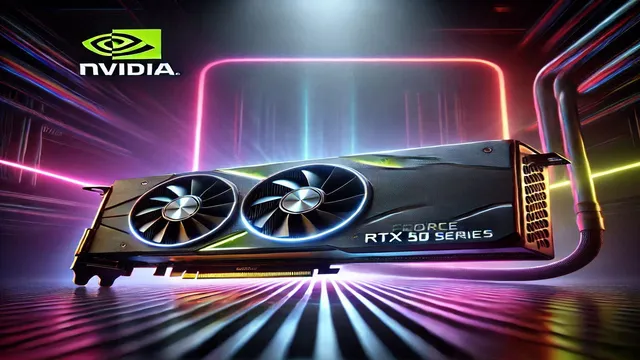CES 2025 Kicks Off with an AI Bang
CES 2025 kicked off with a bang, and from day one, it’s clear we’re witnessing a massive leap in AI and Tech that’s reshaping everything: personal devices, gaming, cars, robotics, and even how industries operate. Las Vegas is buzzing with over 4,500 exhibitors worldwide, and AI is the show's star.
Nvidia Steals the Spotlight with New GeForce RTX 50 Series
Honestly, Nvidia is stealing the spotlight. Jensen Huang, Nvidia’s CEO, walked onto that stage, and you could tell something big was coming. His keynote wasn’t just another presentation; it felt like a preview of the future. Nvidia’s new GeForce RTX 50 Series GPUs were front and center, and they’re built on the Blackwell architecture, which is already being talked about as a game-changer.
Unprecedented Price-Performance Ratio with RTX 570
The real surprise, however, was the pricing of the RTX 570, priced at $549. This GPU delivers performance that rivals or even surpasses the RTX 4090, which was previously seen as a powerhouse. Offering that kind of power at such an accessible price point is practically unheard of.
DLSS 4: AI-Powered Rendering Revolutionizes Gaming and Beyond
But it’s not just about raw performance. Nvidia’s new DLSS 4 (Deep Learning Super Sampling) elevates AI-powered rendering by generating three additional frames for every one frame the GPU renders. This results in smoother gameplay, enhanced detail, and significantly reduced system strain. And while gamers will undoubtedly benefit, this technology goes far beyond gaming, with applications in industries like architecture, filmmaking, and beyond.
Cosmos Platform: Simulating the Real World for AI Training
But Nvidia didn’t stop there. They unveiled their Cosmos platform, designed to simulate the real world for training AI systems.
Nvidia and Toyota Partner for Autonomous Vehicles and Smart Cities
Speaking of autonomous vehicles, Nvidia’s partnership with Toyota was another jaw-dropper. Toyota’s upcoming vehicles will be powered by Nvidia’s Drive AGX Orin supercomputer and Drive OS operating system, making their Advanced Driver Assistance Systems smarter and more reliable.
Agentic AI: Beyond Chatbots and Voice Assistants
AI wasn’t just taking over the automotive space; it was everywhere. Nvidia’s approach to agentic AI took things to another level. These aren’t just chatbots or voice assistants; these are AI systems that can reason, plan, and act independently. They don’t just spit out answers; they solve problems in real time. Nvidia’s AI blueprints make it possible for companies to create custom AI agents for tasks like fraud detection, customer service, or even optimizing supply chains.
you ca read:
GPT-4 and Claude 3.5 Dethroned! This Open-Source AI is the Future
AI-Powered PCs: The Evolution of Personal Computing
PCs are also evolving fast at CES. Companies like Intel, AMD, and Qualcomm showed off their latest processors with neural processing units (NPUs) that handle AI workloads directly on the device.
AI-Powered Home Devices: From Vacuum Cleaners to Robotic Companions
One of the most surprising AI-powered devices was from Roborock, a vacuum cleaner with a robotic arm that can pick up objects like socks and shoes before it starts cleaning.
AI in Healthcare and Environmental Tech: Improving Lives and Protecting the Planet
Healthcare Tech also made waves. AI-empowered tools like AI Dock and NeuroClues aim to improve diagnostics and predict diseases more accurately. And in the environmental Tech space, a company called Molus Scan is using mollusks (yes, mollusks) to monitor water quality. These little creatures are equipped with sensors, and if they detect pollution, they send real-time alerts. It’s an innovative mix of nature and technology tackling real-world problems.
Project Digits: Bringing Supercomputing Power to Your Desk
The day-one announcements didn’t stop there. Nvidia’s reveal of Project Digits was one of the most ambitious unveilings. This is a personal AI supercomputer small enough to fit on a desk but powerful enough to run 200 billion parameter models. It’s built with the Grace Blackwell super chip, combining a one Petaflop FP4 compute capability with 128 GB of DDR5X memory. The fact that this much power is available for around $2,000 is insane. It’s designed for developers, creators, and anyone who wants the full power of AI right at home without needing to rely on cloud services.
The Rise of Physical AI and Humanoid Robots
The push for physical AI, AI that interacts with the real world, is also leading to massive developments in robotics.
Scaling Laws and Synthetic Data: Driving the Next Generation of AI
Nvidia also emphasized the importance of scaling laws in AI development. Models don’t just get better by being fed more data; they improve through smarter processing at every stage. Pre-training feeds them massive datasets to build a foundation; post-training refines their skills through reinforcement learning; and test time computing allows them to reason and break down complex problems on the fly. This last phase is what’s driving the next generation of models like Gemini and making AI capable of handling PhD-level math, coding, and problem-solving in ways that were impossible a few years ago. The sheer volume of data being created is staggering, doubling every year, and Nvidia’s approach to using synthetic data is a clever workaround for the limitations of real-world datasets. Autonomous vehicle companies need incredibly diverse and detailed data to make their systems safe and reliable, and synthetic data fills the gaps without requiring millions of real-world tests. Tesla might have millions of cars collecting data daily, but synthetic environments are the only way for most companies to compete.
you can read also:
Google's AI Revolutionizes Video and Image Generation with V2, Imagine 3, and Whisk
AI Revolutionizes the Automotive Industry and Beyond
The automotive industry leads the AI charge alongside others. Mobileye, Intel’s autonomous driving arm, introduced their Surround ADAS system, delivering a 360° view that enhances road safety.
Conclusion: AI is the Driving Force of Innovation
CES 2025 showcases AI as the core of innovation across every industry.

.webp)
.webp)
.webp)
.webp)
.webp)
.webp)
.webp)
.webp)
0 Comments
Post a Comment